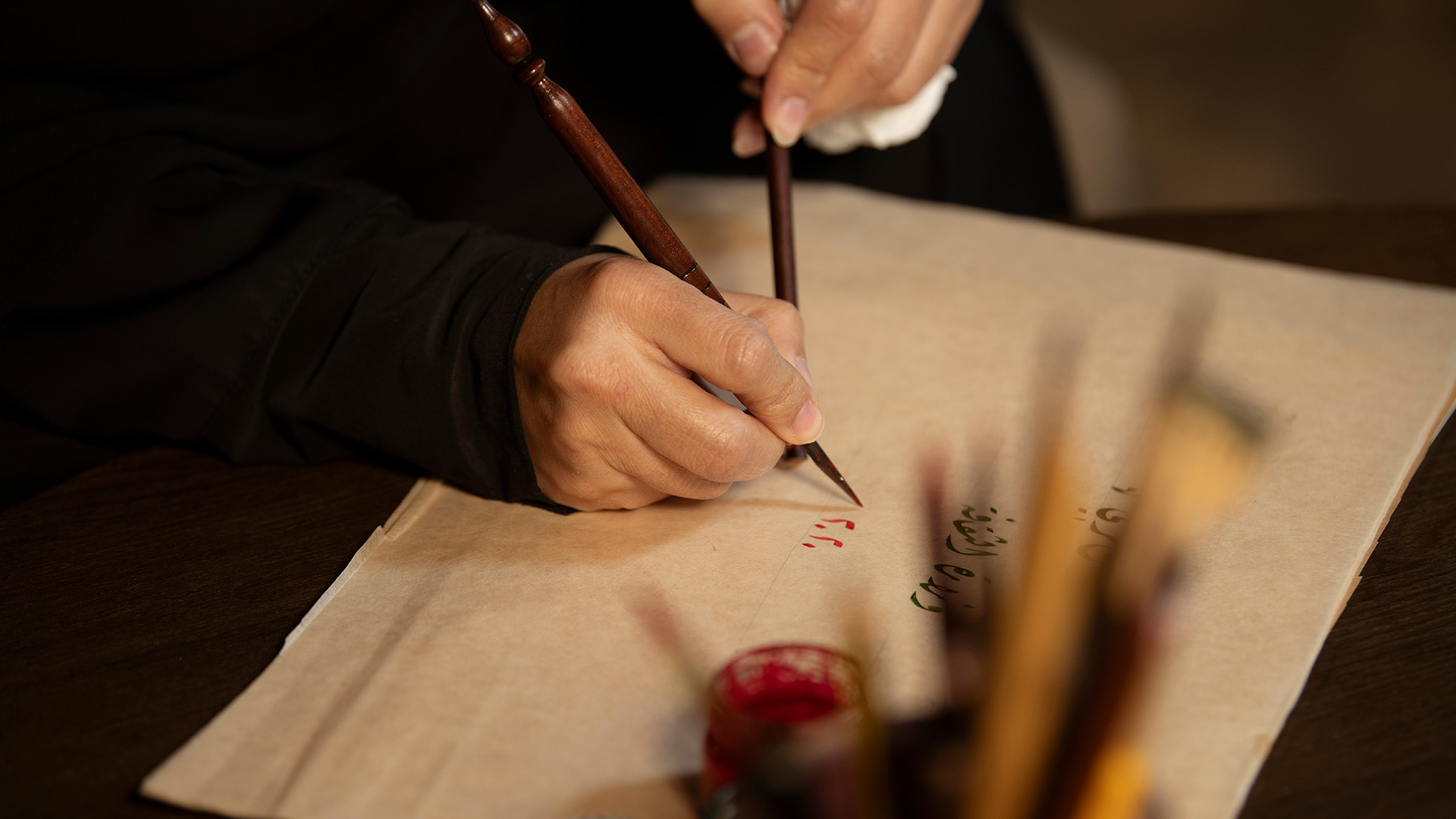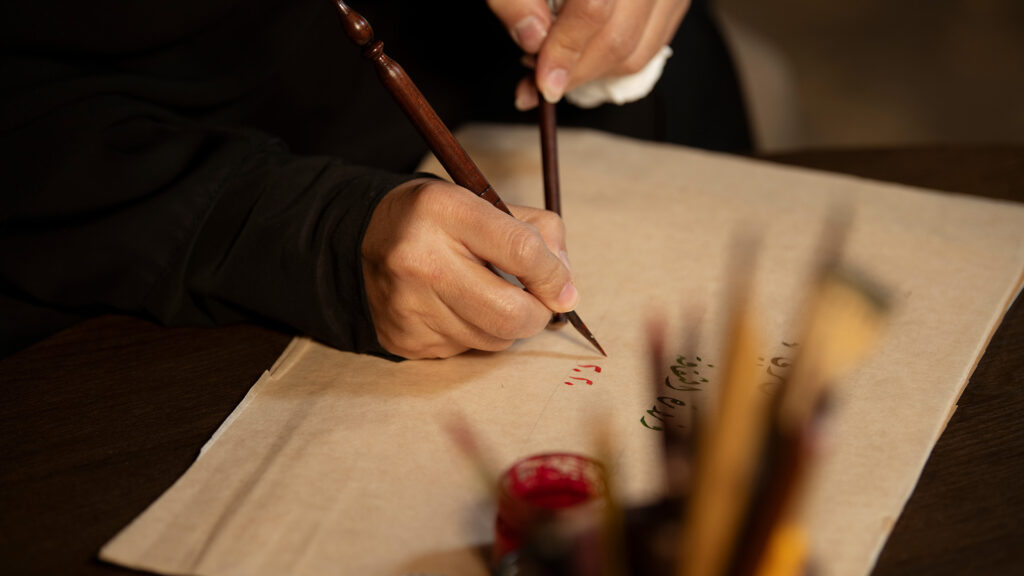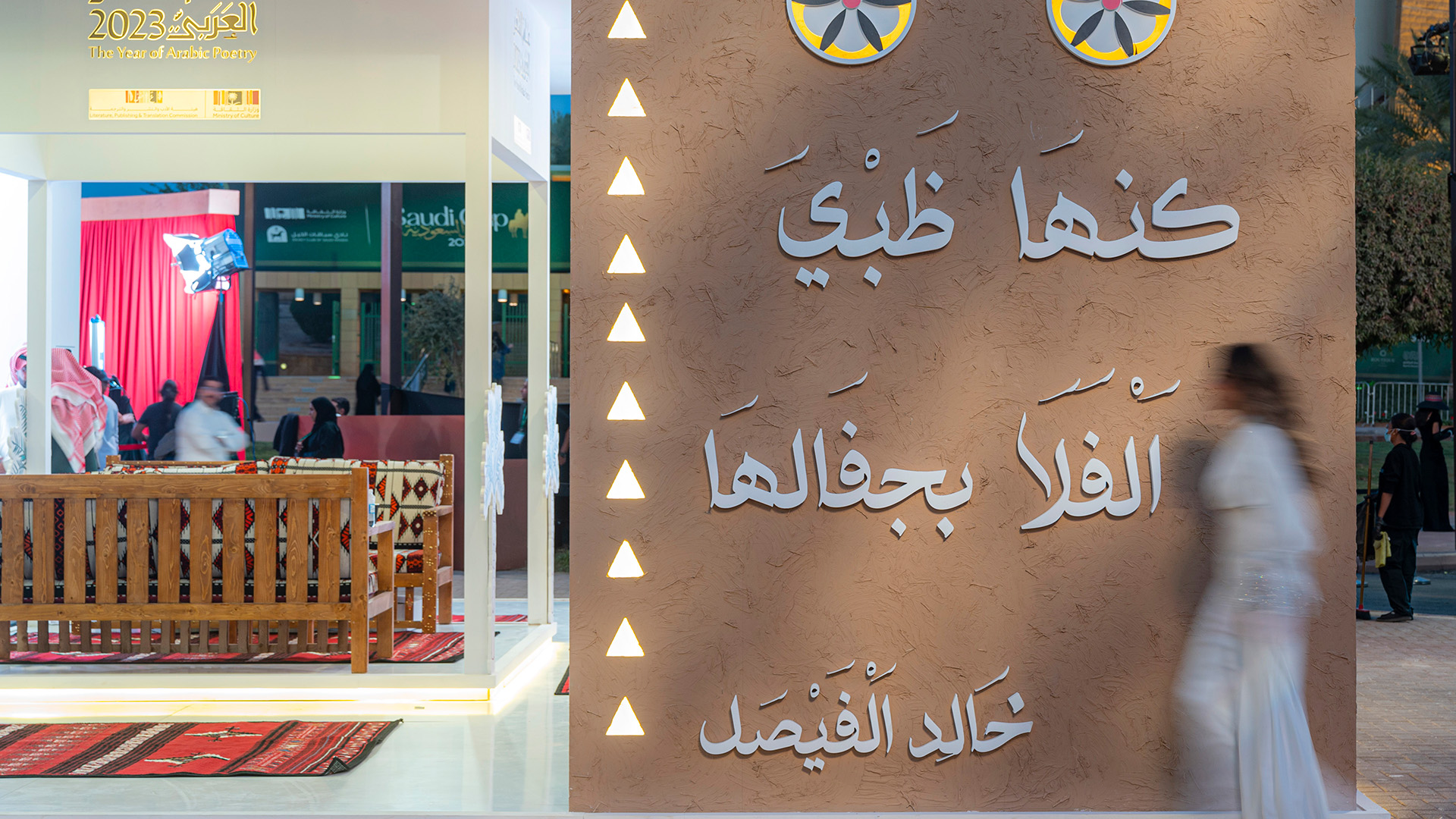
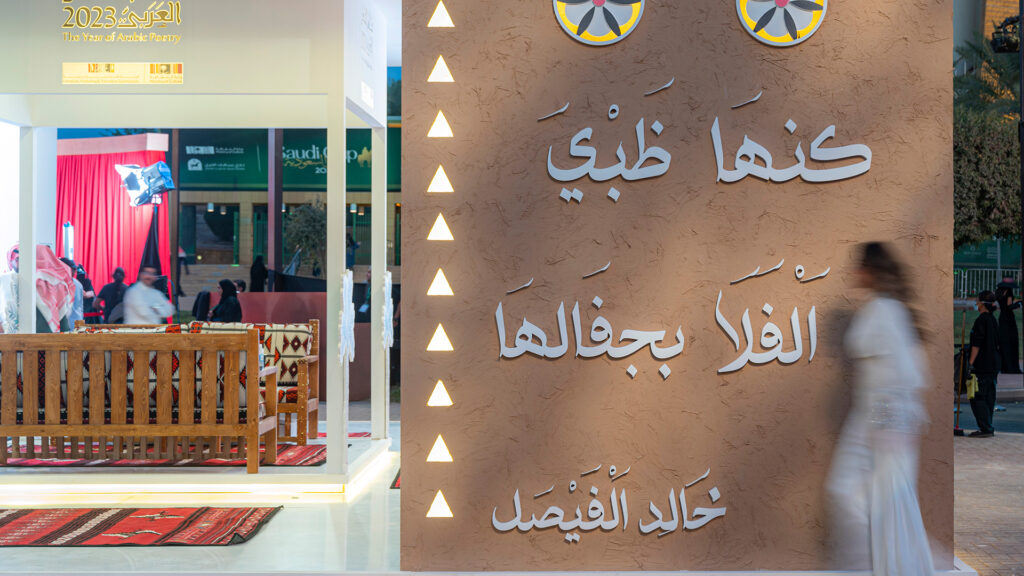
Celebrating the transcendent power of Arabic Poetry
As Saudi Arabia marks 2023 as the Year of Arabic Poetry, a renewed appreciation for Arabic poetry is growing. From its early origins in shaping pre-Islamic Arabian culture to modern-day interpretations, Arabic poetry has left an undeniable mark on culture and continues to enrich literary traditions today.
Following the success of 2022’s Year of Saudi Coffee, the announcement that 2023 will be the Year of Arabic Poetry furthers Saudi Arabia’s ambition to broaden awareness of the key cornerstones in Arabic culture.
“We’re showcasing the vast history of Arabic poetry”, says Saudi Minister of Culture Bader bin Abdullah bin Mohammed bin Farhan Al Saud, “By recognizing its valued presence in human civilization, we’re laying the foundations for its future prosperity.”
As the Year of Arabic Poetry continues, events, activities and initiatives are being held to demonstrate the thought-provoking value of Arabic poetry in all its forms.
But to appreciate Arabic Poetry’s ongoing resurgence, it’s important to understand the impact it’s had on shaping the cultural fabric of the Saudi Arabia and beyond.

Echoes of the past
Arabic poetry played a vital role in shaping early Arab identity. Dating back to the 4th century, poetry flourished as one of the earliest forms of self-expression, with trailblazing pre-Islamic poets Imru’ al-Qais and Zuhayr ibn Abi Sulma standing out as towering figures who captured the hopes, dreams, knighthood, heartbreak, and sacrifices. The art of poetry was then named “the register of the Arabs” (Diwan Al-Arab), in which they expressed their feelings, ideas, and aspirations for life and beauty.
Early formulations of Arabic poetry are notable not only for their pioneering use of romance and war but also for their use as a platform to weave meandering narratives and evoke deep emotion in all poetry topics of ghazal, satire, pride, and elegy, among others.
The qasida is characterized by rhyme, rhythm, and various poetic meters that allow the poet to express their ideas in an influential emotional framework, showcasing their brilliance, uniqueness, and skill in utilizing language, rhythm, and poetic meters.
In Arabic poetry, the qasida and the poets who shaped them created the fundamentals of cultural and emotional expression art in the Arabian Peninsula. This not only paved the way for future poets in Saudi Arabia but also shaped literature to transcend cultural boundaries between nations.
Traces are still there at Toodih and Miqraa, woven by the north wind and the south wind. The morning she left, everyone saddled up by the acacia stand, while I cut bitter colocynth.
The Suspended Ode, Imru’ al-Qais
Inspiring the world
The ability of Arabic poetry to transcend borders and captivate writers across the globe can best be seen in its influence on Victorian romanticism, which saw European poets begin to adopt the same stylistic elements, intricate rhyme patterns, and vibrant imagery.
For example, in his book ‘Arab Civilisation,’ Gustave Le Bon, a 19th century polymath, said Europeans “borrowed the art of rhyme from the Arabs.” The book highlights historical advancements in various sciences, literature, arts, and military strategies, and recognizes that one of the sources for understanding these aspects of civilization is Arabic poetry.
In this context, he said, “It was due to the Arabs’ love of poetry that they began to compose books on monotheism, philosophy, and algebra in verse. Whoever reads their stories notices most of them mixed with poetic works.”
American modernist poets Ezra Pound and T.S. Eliot were influenced by Arabic poetry and culture, with the latter’s famous poem “The Waste Land” drawing on various Arabic sources for inspiration.
Western literary engagement with Arabic traditions demonstrated a cross-cultural appreciation for the depth and beauty of Arabic poetic expression, enriching the tapestry of literature around the globe.

The Kingdom’s celebration of the Year of Arabic Poetry highlights this art form’s ability to convey emotion, from joy to pain, as well as its ability to adapt to changing events while maintaining its status and essence.
A new generation of Saudi poets, such as Mohammed bin Uthaymin, Hussein Sarhan, Ghazi Al-Gosaibi, Muhammad Al-Thubaiti, Fawziyya Abu Khalid, Ahmed Al-Nasser Al-Shaye translate the romanticism and satire of classical Arabic poetry with the frenetic energy of the present. It is a clear demonstration of Arabic poetry’s ability to retain its identity, and ensures it remains a pillar of Saudi culture.
The Kingdom is celebrating contemporary Arabic poetry as a vessel of wisdom, knowledge, and communication, reflecting its commitment to preserving and showcasing its cultural heritage to the world. The Year of Arabic Poetry stands as a platform that highlights emerging talents, fosters cross-cultural dialogue, and celebrates the vibrancy of the Arabic literary tradition.
She teaches me
Two Little Girls, Fawziyya Abu Khalid
names of flowers
the seasons of rain
love of our country
I teach her
stubbornness and mischief . . .
We share one apple and innumerable dreams
We paint a paradise of questions on the face of the desert
We spray each other with the water of the mirage
accompany a fleeting doe
Arabic poetry has weathered the test of time, demonstrating the enduring power of human expression. From its beginnings in the Arabian Peninsula to its profound impact on literature around the globe, Arabic poetry lives on and will continue to inspire poets, writers, and readers for generations to come.
